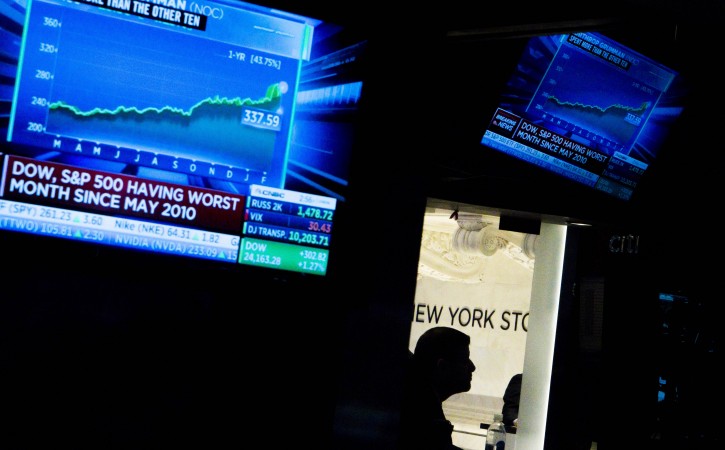 New York – Financial markets need to gird for a lengthy spell of turbulence as more of the world’s top central banks begin shutting down stimulus programs and raising interest rates, the Bank for International Settlements said in its latest report.
New York – Financial markets need to gird for a lengthy spell of turbulence as more of the world’s top central banks begin shutting down stimulus programs and raising interest rates, the Bank for International Settlements said in its latest report.
Subscribe to our Daily Roundup Email
A decade after the collapse of Lehman Brothers ignited the global banking crisis, the Switzerland-based central bank umbrella group likened this year’s market volatility to the reaction of a patient coming off strong medicine.
There could be more turbulence ahead with U.S. rates likely to keep rising, trade war worries escalating, the European Central Bank about to end its money printing program and troubled emerging markets having to jack up interest rates.
“Policymakers and markets should brace themselves for a lengthy and eventful convalescence,” the head of the BIS’ Monetary and Economic Department, Claudio Borio, warned.
The sell-off in emerging markets since the end of January has already matched the one seen five years ago during the ‘taper tantrum’ when investors first freaked out about life without U.S. Federal Reserve stimulus.
That proved a short-term bump for markets, but the BIS sees this episode as having a slower burning fuse, the length of which will partially hinge on whether recessions start to hit as some economists now fear.
Central banks are expected to tread carefully. The imminent end to the ECB’s 2.5 trillion euro bond buying plan will be cushioned as it recycles the profits for years, while the Bank of Japan lags even further behind in the process.
But there is still plenty for markets to fret about.
Wall Street equity prices have been stretched even further, reaching new historical peaks.
Volatility has stayed low and bond market ‘term premia’ has remained highly compressed. Credit spreads for riskier ‘high-yield’ companies have been hovering around levels that prevailed just before the 2007-08 global financial crisis (GFC).
DROWNING IN DEBT
The BIS’ report issued its regular warning about the immense amount of dollar and other foreign currency debt built up by emerging markets, as well as crypto currencies and ‘zombie’ firms whose earnings don’t cover interest payments. [L8N1W7522]
EM currencies have tumbled like dominoes this year as the dollar charged higher on the back of higher U.S. interest rates, a strengthening U.S. economy and trade war concerns.
U.S. dollar lending to emerging markets not including banks has more than doubled since the financial crash to some $3.7 trillion. And these figures do not include any borrowing through FX swaps, which could easily be of a similar order of magnitude.
“Ironically, too much debt was at the heart of the crisis, and now we have more of it,” Borio said.
The BIS report also contained a timely study on the exposure of economies and banks around the world to Turkey, which has been one of the focal points of the emerging market stress this year.
According to data which covers the period to the end of March this year, foreign banks had $223 billion in outstanding loans, securities holdings and other claims vis-à-vis Turkey residents.
The BIS noted that Belgian banks’ claims on Turkey at less than $1 billion, for example, were much smaller than those of German banks at nearly $13 billion. But relative to total capital, the two banking systems had similar exposures at 2.3 percent and 2.4 percent respectively.
For full BIS report click http://www.bis.org/publ/qtrpdf/r_qt1809.htm
